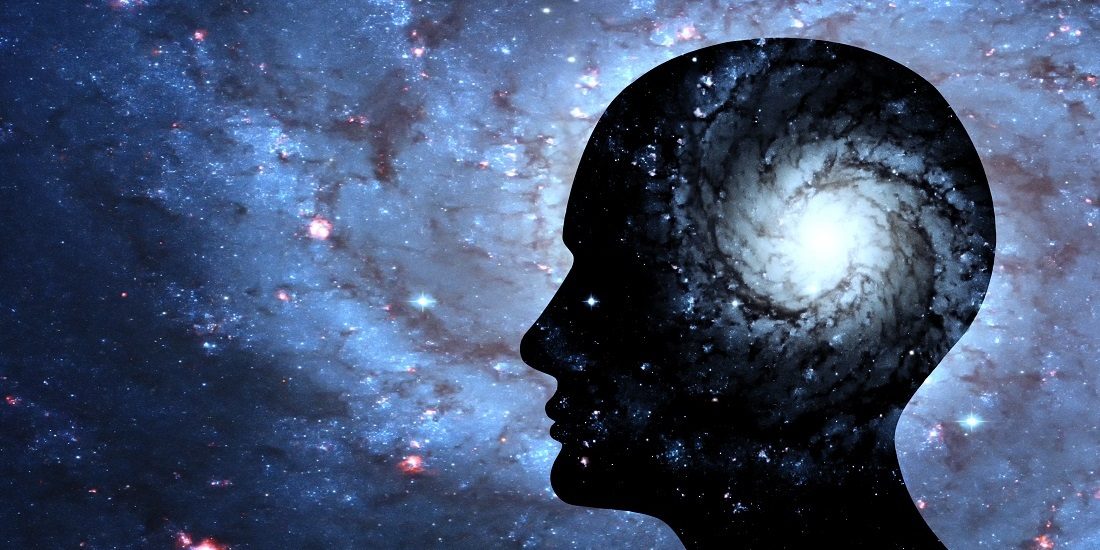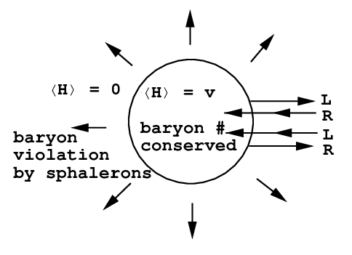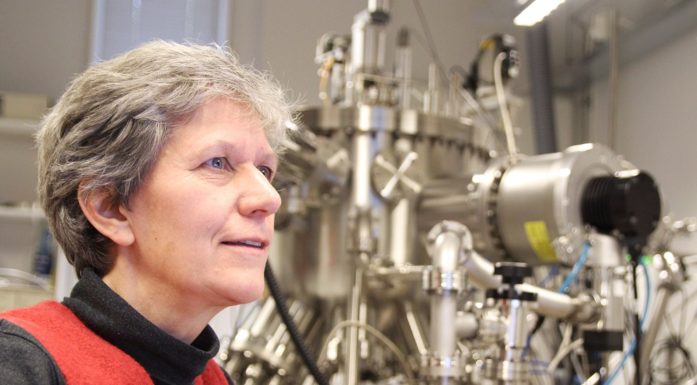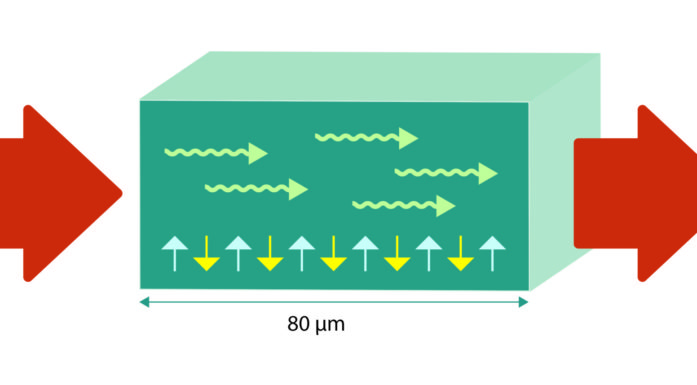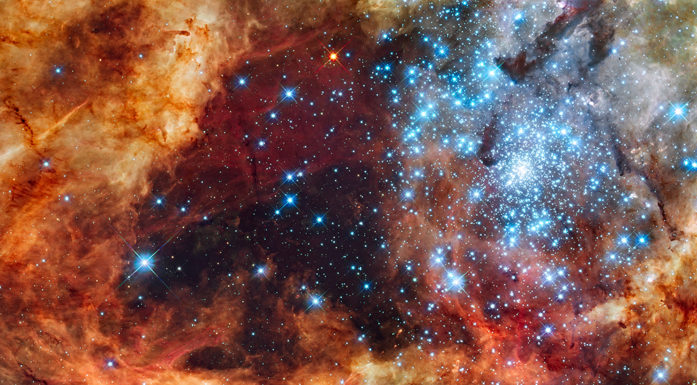Why are you and I – and everything else – here?
Apparently, everything should have turned to light. Instead, you and I and everything else are here. But physicists don’t know why.
The universe consists of matter. Matter is everything we see around us. That’s strange – but why?
In theory, there should also be large amounts of antimatter. Antimatter and matter are actually the same, only reversed in a way, with opposite charges.
“We’re here because there’s more matter than antimatter in the universe.”
But there’s hardly any antimatter in the part of the universe we know, including the stars and other galaxies.
“We’re here because there’s more matter than antimatter in the universe,” says Professor Jens Oluf Andersen at NTNU’s Department of Physics.
This great imbalance between matter and antimatter is why you and I – and spruce trees and chocolate cake – exist.
But we don’t understand why.
Physics uses a standard model to explain and understand how the world is connected. The standard model is a theory that describes all the particles we’re familiar with. It includes quarks, electrons, the Higgs boson particle and how they all interact with each other.
But this standard model cannot explain the fact that the world consists almost exclusively of matter. So, there must be something we don’t yet understand.
Article continues bellow illustration.
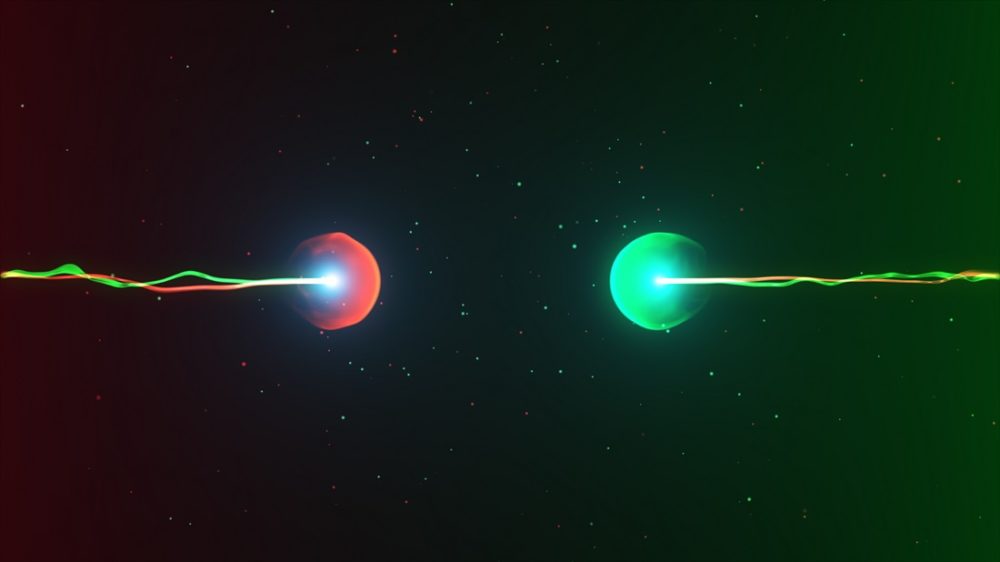
Why is there so much more matter than antimatter? The “baryon asymmetry” problem cannot yet be explained by the standard model. Illustration: Shutterstock, NTB Scanpix
Cancel each other out
When antimatter and matter meet, the result is light and nothing else.
Given equal amounts of matter and antimatter, nothing would remain once the reaction was completed.
As long as we don’t know why more matter exists, we can’t know why the building blocks of anything else exist, either.
“This is one of the biggest unsolved problems in physics,” says Andersen.
We’re talking about the so-called “baryon-asymmetry” problem: that there’s more of one type of particle than of the other. Baryons are subatomic particles, with the best-known ones being protons and neutrons. All baryons have a corresponding antibaryon, which is mysteriously rare. (See Fact box #1)
Baryons
- Baryons are subatomic particles consisting of three quarks.
- There are many types of baryons, but protons and neutrons are the most common ones.
- A proton consists of 2 up quarks and 1 down quark. A neutron consists of 1 up quark and 2 down quarks. Protons and neutrons make up most of baryonic matter.
- All baryons have a similar antibaryon that is made up of the corresponding antiquarks. Three antiquarks are needed to make one antiproton.
- You might also like: On the topology of helimagnets and difficult-to-understand things
More than we know
The standard model of physics explains several aspects of the forces of nature. It explains how atoms become molecules, and it explains the particles that make up atoms.
“The standard model of physics includes all the particles we know about. The newest particle, the Higgs boson, was discovered in 2012 at CERN, says Andersen.
With this discovery, an important piece fell into place. But not the final one.
The standard model works perfectly to explain large parts of everything that we see around us. That makes it all the more annoying when something doesn’t fit.
Baryon asymmetry belongs in this category.
Physicists nevertheless have their theories as to why there is more matter, and thus why we are undeniably present.
Article continues below photo.
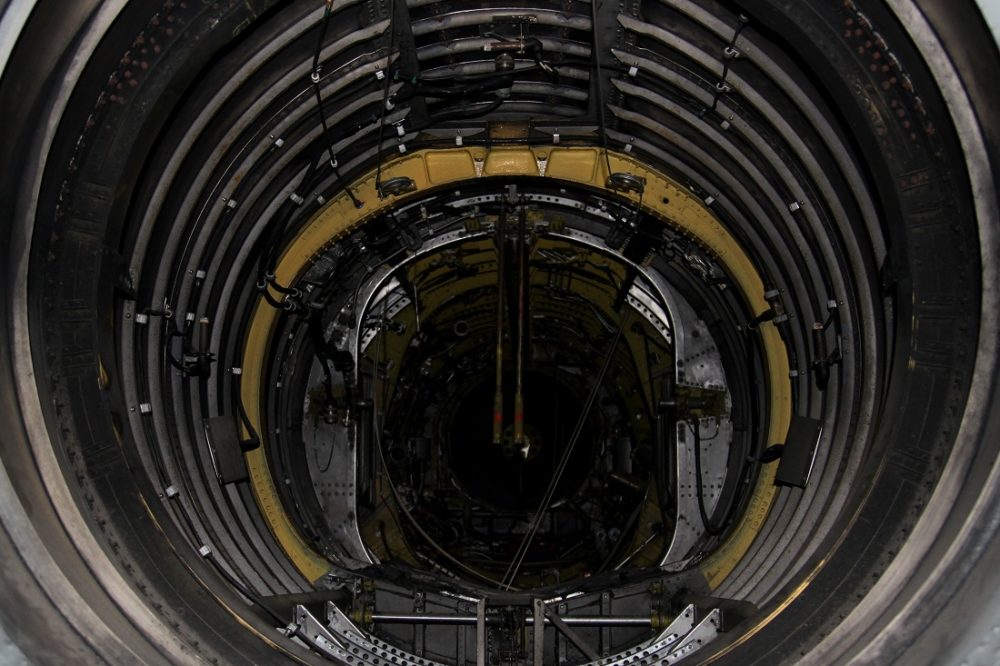
A new model must agree with what we already know, such as from CERN. Photo: Shutterstock, NTB Scanpix
That’s how it started?
“One theory is that it’s been this way since The Big Bang,” says Andersen.
In other words, the imbalance between matter and antimatter is a basic precondition, which has existed more or less from the beginning.
Quarks are among nature’s smallest building blocks. An early surplus of quarks relative to antiquarks was propagated as larger units formed. (See Fact box 2 to find out more)
The beginning
- The early universe (before 10-12of a second after the big bang) consisted of a soup of particles and antiparticles such as quarks and antiquarks, electrons and positrons (antielectrons) and radiation (photons and gluons).
- After the electroweak phase transition, a small surplus of quarks was generated compared to antiquarks. We don’t know why, but this surplus later led to a surplus of baryons (protons and neutrons). So we know that the key to the baryon surplus lies in this early phase.
- The universe has been expanding and the temperature has been dropping from the very beginning, in the same way that the temperature drops as gas expands. The quarks then form hadrons (neutrons, protons and other particles) and the antiquarks form antihadrons (antiprotons, etc.). After a while, the universe consists of these hadron/antihadron pairs + radiation + leptons (electrons/antielectrons).
- When the temperature is low enough, these hadron/antihadron pairs annihilate each other (that is, they collide, cancel each other out and become radiation). But a small surplus of hadrons remains because of the small surplus of quarks after the first electroweak phase transition (EWPT).
- We now have a universe containing hadrons + radiation + leptons/antileptons.
- Later (1 to 10 seconds after the Big Bang) the same thing happens with the lepton/ antilepton pairs. They annihilate each other and form radiation, except for a small surplus of electrons that survive. Electrons are part of the atoms that exist today, as is the atomic nucleus consisting of protons and neutrons, i.e. baryons.
But Andersen doesn’t care for this explanation.
“We’re still not happy with that idea, because it doesn’t tell us much.
So then the follow-up question becomes: Why was it like that from the beginning? Why did quarks initially outnumber antiquarks?
“In principle, it’s possible to generate asymmetry within the standard model of physics – that is, the difference between the amount of matter and antimatter. But we run into two problems,” says Andersen.
Beyond the standard model
First of all, we have to go way back in time, to just after the Big Bang when everything started.
We’re talking about 10 picoseconds, or 10-11 seconds after the Big Bang.
The second problem is that temperatures have to reach around 1 trillion degrees Kelvin, or 1015 degrees. That’s scorching – consider that the sun’s surface is only about 5700 degrees. Regardless – it doesn’t fit.
“It can’t work. In the standard model we don’t have enough matter,” Andersen says. “The problem is that the jump in the expectation value of the Higgs field is too small,” he adds, for the benefit those with only a minimum grasp of physics.
The rest of us just have to settle for not yet knowing everything. We’re talking about what is “beyond standard model physics,” that is, what we don’t know.
“It’s probably not just our imagination that’s imposing limits, but lots of different possibilities exist,” says Andersen.
These possibilities therefore need to work together with the standard model.
“What we’re really looking for is an extension of the standard model. Something that fits into it,” says Andersen.
Neither he nor other physicists doubt that the standard model is right. The model is continuously tested at CERN and other particle accelerators. It’s just that the model isn’t yet complete.
Andersen and his colleagues are investigating various possibilities for the model to fit with the imbalance between matter and antimatter. The latest results were recently published in Physical Review Letters.
- You might also like: When 80 microns is enough
One thing becomes something else
“Actually, we’re talking about phase transitions,” says Andersen.
Something transforms from one thing to something else. Like water that turns into steam or ice under various conditions. Or maybe that matter came about as a result of an electroweak phase transition (EWPT) and formed a surplus of baryons just after the Big Bang. Just maybe.
The electroweak phase transition occurs by the formation of bubbles. The new phase expands, a bit like water bubbles, and takes over the entire universe. (See Fact box #3 if you want to know more.)
Phase transition
- Before the phase transition (at high temperature), the Higgs field has a zero-expectation value and afterwards it has a non-zero value.
- An analogy here is the magnetization of a piece of iron (before magnetization, the expectation value of the magnetization is zero, then different from zero because all the small magnets in the iron point the same way).
- This electroweak phase transition is also interesting because an expectation value for the Higgs field is a mechanism that gives particles mass. (Before the phase transition, the particles were massless, after which they have mass like today.)
Andersen and his colleagues tested the so-called “two Higgs doublet” model (2HDM), one of the simplest extensions of the standard model. They searched for possible areas where the right conditions are present to create matter.
“Several scenarios exist for how the baryon asymmetry was created. We studied the electroweak phase transition using the 2HDM model. This phase transition takes place in the early stage of our universe,” says Andersen.
You can compare the process to boiling water. When water reaches 100 degrees Celsius, gas bubbles form and rise up. Everyone has seen this. These gas bubbles contain water vapour which is the gas phase.
Water is a liquid. When it went from the “gas phase” to the “liquid phase” in the early universe, in a process where the universe expands and is cooled, it turns out that we can produce a surplus of quarks compared to antiquarks. Or generate the baryon asymmetry,” says Andersen.
- You might also like: A spin on the future
Mathematics
Last but not least, the researchers are also doing mathematics.
In order for the models to work in sync, parameters or numerical values have to fit so that both models are right at the same time. So the work is about finding these parameters.
In the most recent article, Andersen and his colleagues narrowed down the mathematical area where matter can be created and at the same time correspond to both models. They have now narrowed the possibilities.
“For the new model (2HDM) to match what we already know from CERN, for example, the parameters in the model can’t be just anything. On the other hand, to be able to produce enough baryon asymmetry, the parameters also have to be within a certain range. So that’s why we’re trying to narrow the parameter range. But that’s still a long way off,” says Andersen.
In any case, the researchers have made a bit of headway on the road to understanding why we and everything else are here.
Source: Nonperturbative Analysis of the Electroweak Phase Transition in the Two Higgs Doublet Model. Jens O. Andersen, Tyler Gorda, Andreas Helset, Lauri Niemi, Tuomas V. I. Tenkanen, Anders Tranberg, Aleksi Vuorinen, and David J. Weir. Phys. Rev. Letters 121, 191802 – Published November 7, 2018.
